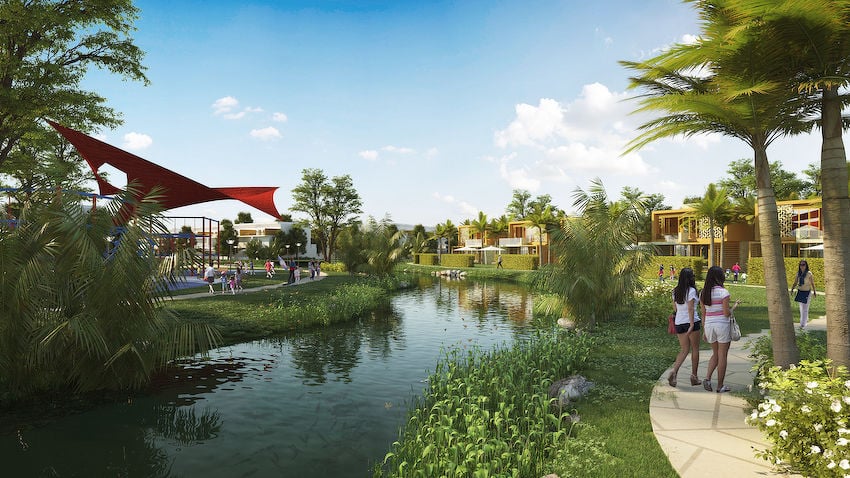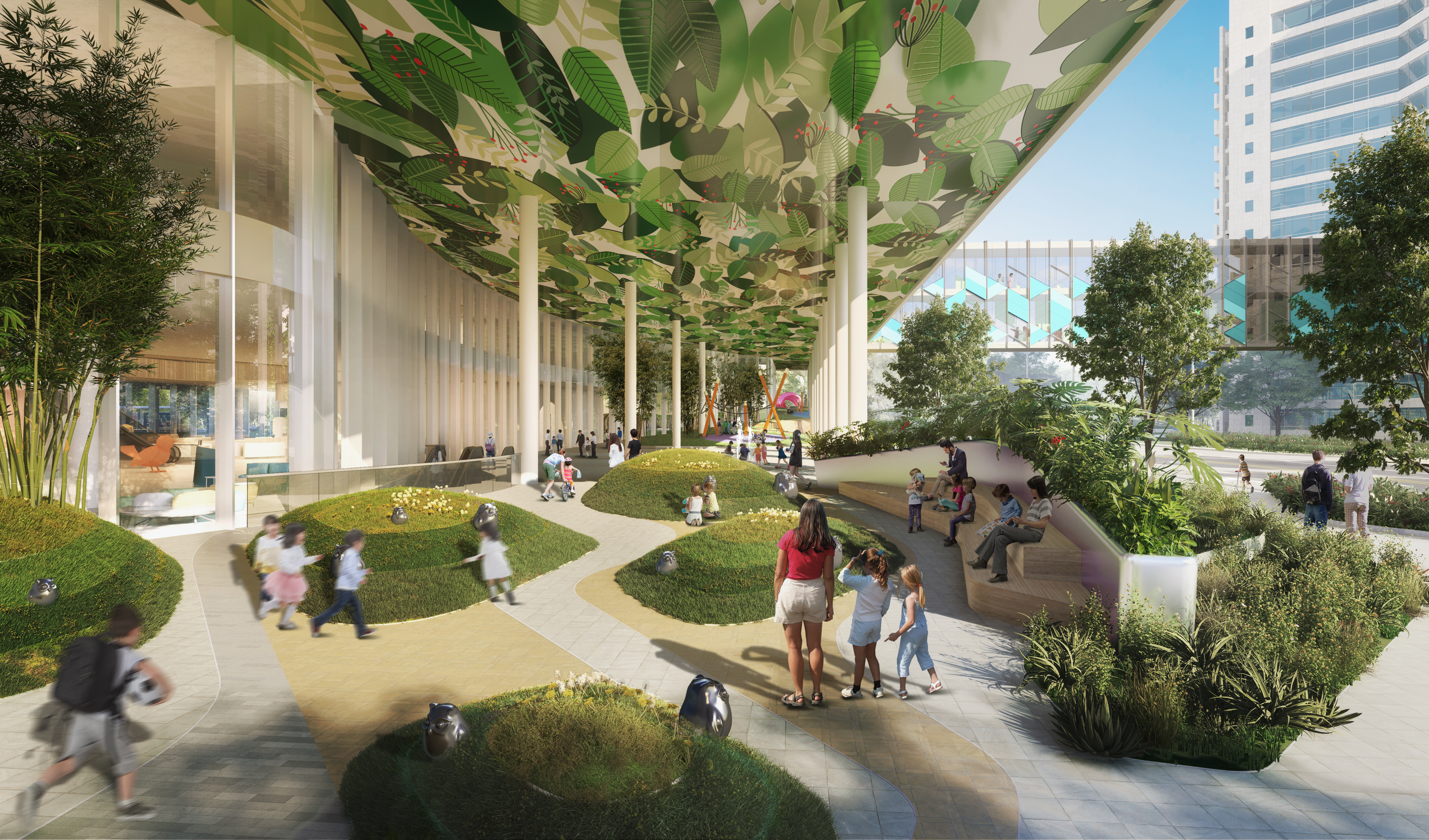Biomimicry: When Nature and Tech Work Together

By SJ Global Academy and Surbana Jurong’s Smart Cities Solutions
Clearing land for construction destroys natural habitats, especially the soil. When the topsoil is removed, the soil loses its ability to regulate water flow, provide nutrients, and fight pests and diseases. The off-site negative impact includes affecting soil quality and deterioration of water quality in the surrounding waters, if not properly managed.
As urbanisation accelerates, the question remains – how then can we make sure that construction does not bring about more waste and destroy biodiversity, especially if it is a green building that is being constructed?
Increasingly, architects, designers and urban planners are turning to nature to address sustainability goals in urban planning.
Mimicking Nature in Our Design
Designers have always been inspired by nature and its abilities to solve challenges in interesting ways. Nature is able to produce an endless variety of forms that are both novel and high performing. To date, designers have harnessed this inspiration through the concept of biomimicry which is the duplication of models, structures and elements of nature. One good example is the suction cups that we use to hold large panes of glass similar to the feet of lizards. The aerodynamic nose of the Bullet Trains in Japan are designed after the beaks of the King Fisher. Even the aeroplanes we take were inspired by the wings and flights of birds.
Mimicking organisms found in nature represent a great variety of novel solutions that we can harness for the functional requirements of our built environment. Nature has spent billions of years refining and perfecting nature’s challenges that we have much to learn from in all forms, be it on sustainable and structural aspects.
In architecture and manufacturing, biomimicry is the practice of designing buildings and goods that simulate or co-opt processes that occur in nature. Eden Project, a tourist attraction in Cornwall, England, UK is built from a reclaimed china clay pit. The Eden Project complex, which took two and the half years to complete, is dominated by two massive enclosures consisting of connecting domes called Biomes, the habitat of thousands of plant species. Each enclosure simulates a natural biome, consisting of hundreds of hexagonal and pentagonal ethylene tetrafluoroethylenes.
Navigating the Trade-offs
Designers have to navigate complex multi-dimensional trade-offs and contradictions. They are confronted with the issue of designing to draw high yield in commercial spaces, whilst having to ensure limits to the amount of carbon emitted. It raises critical concerns of how designers should alter design processes and strategies to produce better designs; how they should use AI and computation to facilitate greener and more sustainable design while keeping the functionality of space.
Nature-based designs must be able to keep maintenance costs manageable even as it ticks the box on sustainability goals. By adopting nature-based designs, designers are prioritising biodegradable materials that adopt nature’s natural recycling cycle which will lead to a truly zero waste culture in design and construction. This will improve the carbon footprint at the embodied energy stage as well as the operational carbon stage of the development.

Mangroves and Reversible Architecture
Aggressive consumption of natural resources to make way for urban cities has tested urban temperatures to the extreme, increasing the gap between rural and urban temperatures. Every change in land use removes trees and green spaces, adding to heat-absorbing materials. As the urban landscape matures, energy used to run buildings and transport infrastructure adds to waste heat. Every change in the size and shape of a city, or the layout of streets and buildings, increases heat intensity.
To reduce aggressive consumption of natural resources, one very obvious nature-based design solution is to plant more trees and grass in addition to retaining what is already in the soil. The rationale is that vegetation intercepts rain, reducing its velocity and preventing splash erosion. It also slows runoff, reduces sheet erosion, anchors and reinforces the soil with its root system. Trees reduce the rate of erosion by protecting the soil from the impact of rain, transpiring large amounts of water which counteracts very wet soil, binding soil to sloping land with their roots.
Mangroves planted along coast lines not only uplift ecological habitats, but also to protect the coast. There is now growing evidence that areas that had dense mangrove growing along the coast saw the erosive impact of the 2004 tsunami dissipating rapidly as compared to areas without any mangroves.
Designers and builders are challenged to achieve more than a one to one ground cover replacement. Beyond that, to grow vegetation in the façade and sky gardens, not just on the roof surface. Reducing the amount of hard surfaces, vertical and horizontal, will also reduce heat on the numerous surface areas in urban spaces.
Yet another strategy is reversible architecture. After a building is completed, we can monitor the productivity of the various design and construction elements for economic and productive characteristics, for the waste generated and the carbon footprint. It includes urban planning strategies focused on prevention of waste, and reduction of noise arising from the construction, repair and demolition of buildings. In pursuing reversible planning strategies, it is not enough to rely on a single discipline, say in architecture or even in nature-based solutions, but to garner a multi-disciplinary focus.
In Singapore, the latest urban design trend is to garner a multi-disciplinary focus in urban solutions which include credit certification, the alignment of projects with ISO sustainability standards and nature-based solutions such as biomimicry. The structure, shape, and purpose of suburbs, towns, and communities are related to urban design, which is the result of creating places where individuals live, communicate with one another, and interact with their surrounding’s physical locations.
Nature and Tech Go Together
With the help of AI, we can better manage complexity, solve complex optimization problems, and appreciate the inner workings of nature-based innovative solutions. With cloud computing, all stakeholders involved in a project can access nature-based and other creative solutions so that they are on the same page on optimal solutions for future applications.
For instance, if sufficient data is compounded on how mangroves protect coastal regions during storms, designers can use the data to simulate more powerful storm surges and floods in cities to defend cities from flooding during heavy rains. In flood and tsunami studies, it was observed how the thoroughfare and roads of cities increase the wave height and speed. Such data will be very useful when simulated to guide city planners on how to design and future proof new cities from such an occurrence as well as mitigate current city designs.
There is a need to understand the materials used, the amount of materials used, the constructability of these materials and how these can marry nature or mimic nature so that the essence of nature-based design is inculcated in the design DNA.
Technology is a key enabler in charting the future of design. Building Information Modelling and Digital Twins play a critical part in the way forward. Designers can now simulate various permutations and scenarios – building into these scenarios various elements of climate change risks including floods, trends on structural defects based on aggregated data, all powered by high performing cloud computing. Cloud also enables construction materials to be tagged and documented, creating a Material Bank in buildings so that the materials can be re-used after buildings are deconstructed.
That way, investors, developers and building operators have a better grasp of the true value of a building and its associated costs from development right through to project management and maintenance.


